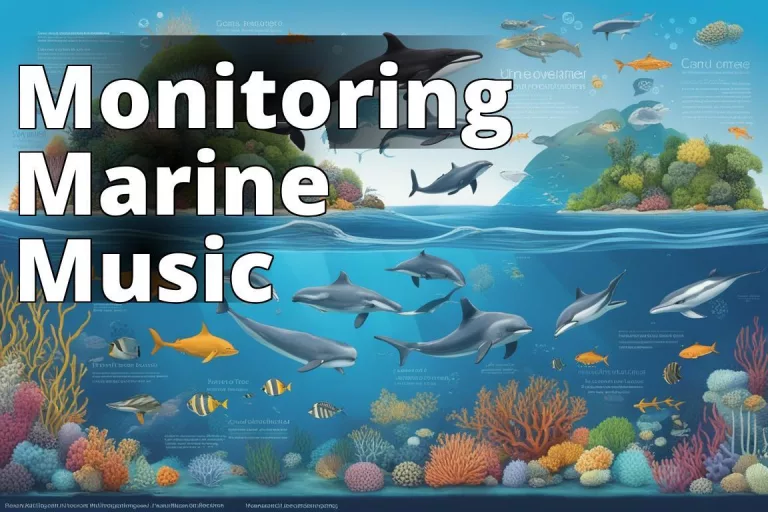In the vast, echoing world beneath the ocean’s surface, sound travels farther and faster than light or radio waves. Here, in this deep blue expanse, underwater acoustic monitoring technologies serve as our ears, letting us listen to the myriad sounds from marine life, the movements of ships, and even the subtlest changes in the ocean’s own natural processes. These technologies, critical in the fight against climate change and the preservation of marine environments, offer a window into the unseen, providing data essential for scientific research, environmental protection, and industrial regulation.
Learn about Underwater Acoustic Monitoring Technologies
- Understand passive and active monitoring.
- Discover marine mammal monitoring.
- Explore products, services, and projects in this field.
Overview
Underwater acoustic monitoring is more than just listening to the sounds of the ocean; it’s about understanding the complex symphony of life beneath the waves and how human activities impact it. The technology comes in two main flavors: passive and active acoustic monitoring, each with its unique applications and benefits. As someone deeply fascinated by the intersection of technology and environmental conservation, I’ve found that these systems not only exemplify human ingenuity but also our responsibility towards understanding and protecting marine ecosystems.
Passive Acoustic Monitoring
Imagine sitting quietly in a darkened room, ears tuned to every sound. This is the essence of passive acoustic monitoring (PAM). It involves deploying hydrophones (underwater microphones) to record the sounds in the ocean without actively adding noise to the environment. This method is invaluable for studying marine life, especially cetaceans like whales and dolphins, who communicate and navigate using sound. It’s a non-intrusive way to gather data on these creatures’ behaviors, migration patterns, and responses to environmental changes, offering insights critical for their conservation.
Insider Tip: “When deploying PAM systems, always consider the seasonal and diurnal variations in marine life activity to optimize data collection,” advises Dr. Aisha Bello, a marine biologist specializing in cetacean research.
Active Acoustic Monitoring
Contrary to PAM, active acoustic monitoring (AAM) involves emitting sound pulses into the water and analyzing the echoes that return. This technology is akin to sonar, used by ships and submarines for navigation, but it’s also crucial for mapping the seafloor, detecting underwater objects, and assessing fish populations. While more intrusive than PAM due to the noise it introduces into the environment, AAM provides detailed, real-time data essential for numerous applications, from commercial fishing to undersea archaeology.
Marine Mammal Monitoring
Monitoring marine mammals is a critical application of underwater acoustic technologies. These creatures are not only vital to marine ecosystems but are also indicators of ocean health. By listening to their sounds, researchers can assess populations, detect the presence of rare or endangered species, and monitor the impacts of noise pollution from shipping and industrial activities. This information is crucial for developing strategies to mitigate human impacts on these animals, ensuring the preservation of biodiversity in our oceans.
Underwater Acoustic Monitoring Products
From compact, battery-operated hydrophones to sophisticated sonar systems, the range of products available for underwater acoustic monitoring is vast. Selecting the right equipment depends on the specific needs of the project, whether it’s long-term environmental monitoring or a short-term survey. For beginners in the field, start with a simple, robust PAM system to get acquainted with the basics of underwater acoustics before moving on to more complex setups.

Underwater Acoustic Monitoring Services
For those who don’t have the expertise or resources to conduct acoustic monitoring in-house, numerous companies and institutions offer monitoring services. These can range from equipment rental and data collection to comprehensive analysis and reporting. Partnering with experienced professionals can provide invaluable insights, especially for complex projects or sensitive environments where precision and accuracy are paramount.
Underwater Acoustic Monitoring Projects
One of the most compelling aspects of underwater acoustic monitoring is its application in real-world projects. From tracking the movements of endangered whale species in busy shipping lanes to mapping unexplored sections of the ocean floor, these technologies have facilitated groundbreaking research and conservation efforts. Each project not only advances our understanding of the marine environment but also showcases the critical role of acoustic monitoring in safeguarding our planet’s future.
Case Study Highlight: The Silent Ocean Project, a collaborative effort among several international research institutions, employed both PAM and AAM technologies to study the impacts of noise pollution on marine life in the North Atlantic. The findings have been instrumental in developing new maritime regulations to reduce noise levels in critical marine habitats.
Related Links
For those interested in diving deeper into the world of environmental monitoring technologies, here are some related areas to explore:
- Acoustic Environmental Monitoring Technologies
- Water Quality Monitoring Technologies
- Noise Monitoring Technologies
- Environmental Monitoring Sensor Technologies
- Air Quality Monitoring Technologies
- Remote Sensing Technologies for Environmental Monitoring
- IoT for Water Quality Monitoring
- Mobile and Wearable Environmental Monitoring Technologies
- Soil Quality Monitoring Technologies
- Artificial Intelligence for Environmental Monitoring
In the realm of environmental conservation and climate change mitigation, underwater acoustic monitoring technologies stand out as powerful tools, bridging the gap between human understanding and the mysteries of the deep. These systems not only enable us to listen to the ocean but more importantly, to hear what it’s telling us about the health of our planet. As we move forward, the continued development and application of these technologies will be crucial in our efforts to protect and preserve the marine environment for generations to come.
Answers To Common Questions
Who benefits from underwater acoustic monitoring technologies?
Scientists, researchers, and policymakers benefit from these technologies for monitoring marine environments.
What are underwater acoustic monitoring technologies used for?
These technologies are used to track marine life, study ocean soundscapes, and monitor climate change impacts underwater.
How do underwater acoustic monitoring technologies work?
They work by deploying hydrophones to record sounds underwater, which are then analyzed to gather data on marine ecosystems.
Why invest in underwater acoustic monitoring technologies?
Investing in these technologies is crucial for understanding climate change effects on marine life and ecosystems.
Who objects to the use of underwater acoustic monitoring technologies?
Some environmentalists may object due to concerns about the potential impact of underwater noise pollution on marine species.
How can underwater acoustic monitoring technologies contribute to climate change solutions?
These technologies can provide valuable data on ocean temperature changes, marine biodiversity shifts, and help in developing effective conservation strategies.


